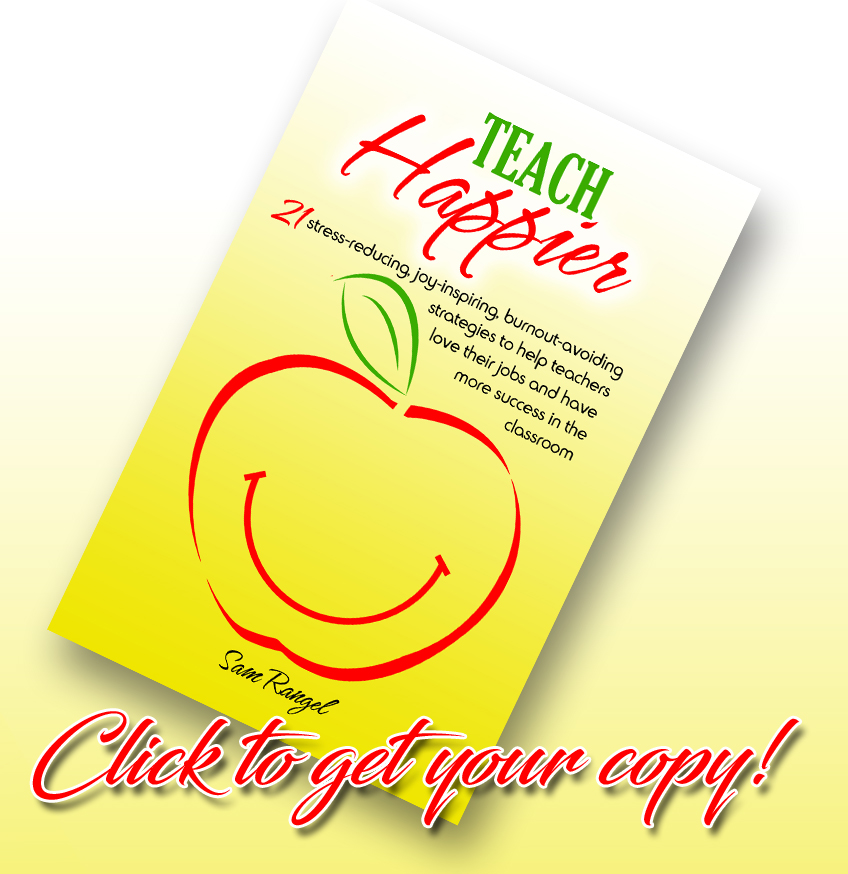Hello again,
With the traditional beginning of school just around the corner, I wanted to share some tips that I think would be helpful when preparing for that first day of school.
When I first started teaching, I had no clue what I was supposed to do that first day, but that was a long time ago. Thankfully, today’s teacher schools are better preparing new teachers for that moment when students first line up outside their classroom.
Just in case there are some new teachers out there who want to start their year off with more success in the classroom, here are my
10 Tips to a Successful First Day of School
1. Meet the students at the door. Go ahead and welcome your students as they come in to the classroom. Say, “Good morning. Come on in. How are you? I’m glad you’re here. That’s a nice shirt. I like your haircut. etc.” Giving a handshake, a high five or a knuckle bump might be a little much on the first day, but you might want to try it. I know teachers who shake students’ hands as they come in, and it works for them. It depends on what you’re comfortable with. The point is to make a connection with each student as they walk in to the classroom. It’s the first step in building a positive relationship with your students.
2. Smile. I remember being told. “If you want the students to respect you, don’t smile until December.” I even used to tell my student teachers this. I remember having the students sit down, and then wait for the bell to ring while wearing my serious face. The students would watch me nervously, even a bit scared of this mean-looking teacher who wasn’t saying a word. Once the bell rang, I began my first-day speech. I look back, and regret not starting my years off with a smile. Later in my career, I found that the more I smiled on the first day, the better my day went. Smiling is powerful.
3. Have your seating chart ready. For new teachers, a seating chart is a good way to get to know the students quickly. Even on the first day, you’ll know who the disruptive students may be, and getting to be able to call their name will go a long way in asserting yourself as the one in control. In my recent years in the classroom, I never had a seating chart on the first day of school. I would let them sit by their friends, and tell them that as long as they are not being disruptive and getting their work done, they can stay in those seats. After a week or so, I would learn which students can’t sit next to each other, and I’d make my seating chart accordingly. I still would recommend that you have a seating chart ready, especially if you’re a new teacher. Use the class roster, and randomly place the students in your seating chart. You can always change it later once you get to know the kids.
4. Have the students fill out an information / interest sheet. Here’s a link to my “Who Are You” sheet that I would have the kids fill out for homework on the first day. On the bottom of the sheet, I always added the question, “What question would you like to ask Mr. Rangel?” The following day, I would collect the sheets, and spend about 15 minutes going through each sheet and answering their questions. This allowed me to share a little about myself, and at the same time connect with each student. The Who Are You sheet gave me a little bit of an insight into the personality of each student. The question, “What grade do you think you’ll get in my class and why?” is very revealing. You can see what kind of student each student thinks he/she is. Feel free to use it.
5. Go over the rules of your classroom. This is important, but be careful that you don’t focus too much on the consequences. In a recent post, I shared that a classroom only needs two rules – Respect yourself and respect others. It’s important, however, that you use specific examples do demonstrate these rules. I would encourage you to read that post to see what I mean. Here is the link. If you choose to make a list of rules, please make them positive rules and not “Do-Not” rules. For example, “Do not come late to class” becomes, “Get every minute of your education by arriving to class on time.” I know that’s probably not the best example, but you know what I mean. Make sure your rules focus on the positive behavior and not the negative.
6. Describe your Walk-Into-Classroom routine. Kids need some kind of routine to start the class. Some schools call it a warm-up activity or a sponge activity, but students need to know that when they walk into your classroom, they need to get started on something right away – without having to be told by you. In my class, students knew that they had to sit down, pull out their notebooks and copy what was on the screen. It normally took them about 5 minutes, but for those five minutes they were writing and getting into learning mode. This was especially effective when they came in all excited from PE or lunch.
7. Give the students your contact information. Students need to know that you are available to them even when they’re not in your class. I’m not saying that you have to give them your cell number, but they should at least be allowed to email you using your school email address. Extra Tip: Don’t accept their Facebook friend requests. Kids will want to connect with you on Facebook, but unless you have a separate Facebook account for your students, it’s better to maintain that professional distance. Also, make sure you check your school email often. I know this may be time consuming, but it will be worth it. If you don’t have your school email synced with your phone yet, I would recommend that you get that done also.
8. Talk a little bit about yourself. It’s OK to share your likes and dislikes, where you were brought up, your favorite foods, a story from your recent vacation, etc. Contrary to the advice of many veteran teachers out there, it’s OK to show your human side to the kids. In fact, it’s OK to even be a little vulnerable – not too much, just a little. I had a teacher tell me that when she shared how her horse had passed away, the two students who had given her the toughest time all year, came up to her and gave her a hug. Personal stories are powerful. Make sure you watch the clock, however. Keep your stories on the short side.
9. Tell students how they will be graded. This can’t be a mystery to the kids, and they’ll want to know right away what they will have to do to get a good grade in your class. What percentage is homework? Tests? Quizzes? Class assignments, etc? Is it possible for every student to get an “A” in your class? Of course it is. Describe what it will take to achieve this.
10. Have a syllabus ready to hand out. In the syllabus, you have to write it as if you are writing it to the parents of your students, which in fact, you are. Your kids probably won’t read it, but their parents will. Include your rules, grading procedure, contact information, and a place where parents can sign and leave their email address as well. Having this contact information will be so helpful, especially if the student begins to fall behind. An email to the parent can be a great first step to getting the student back on track. Divide the syllabus into two sections, and have the students bring back the signed portion of the syllabus.
The first day of school makes everybody a little nervous – the teacher, the students, the parents, everybody.
Being a little more prepared will make your first day a little less stressful.
You’ll be talking a lot, so bring some water. Trust me. Your water bottle will be your best friend on the first day of school. There’s an extra tip at no charge. : )
I hope this list helps.
I would love to hear about other tips that you would add to this list. Please leave a comment below.
Also, if you haven’t done so already, please “like” the SITC Facebook page. It would mean a lot to me. Here’s the link.
Until next time,
Here’s to your Success in the Classroom!
Thanks,
Sam




I absolutely agree about meeting them at the door and smiling. I’m a librarian and I step outside the library during most class changes. The more you interact with your students the better the relationship. The better the relationship the increase in quality in teaching and learning. Thanks for the list.
Hi Sue,
You’re right. Building a positive relationship is so important to improving teaching and learning. Thank you for your comment.
Sam